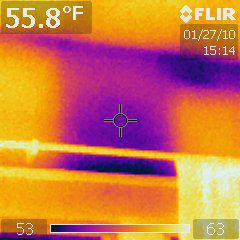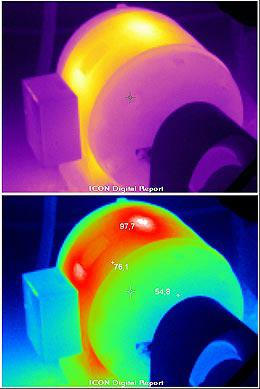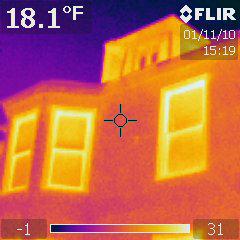
Home Inspection Cedar Rapids, Thermal Imaging…Point and Shoot?
On one of my recent home inspections in Cedar Rapids/Waterloo IA, I was asked about the infrared thermal imaging camera that I was using. The person asked me if it was just point and shoot or what?
My answer was to allow the person to hold the camera and nicely ask them, “what do you see”?
From there I began to explain to them what they were looking at and how it takes more than a Infrared class on the Internet to understand what is going on here.
Not to discount the Internet IR class at all because it is necessary to understand the dynamics of the camera and its limitations / benefits.

There are two methods in which a thermal image is used. Quantitative and Qualitative .
The Quantitative method is typically used in industrial settings. A good example of quantitative would not be a home inspection but rather, checking the temperature of an industrial electric motor for preventative maintenance. If the motor was operating within a certain set of temperature parameters, then it would be deemed acceptable. If however the motor was operating outside of the set parameters or had some type of hot spot, it may be replaced or temporarily taken out of service for repair. This makes thermal imaging invaluable in these types of applications.

The other method for a thermal image to be used is qualitative. This is the best method with regards to the home inspection. The reason for this is that during the home inspection we are not necessarily looking at temperatures as much as we are looking for anomalies. (Things that are not quite right). This is where experience plays a tremendous part in the evaluation of what we see on the camera.
Having a strong background, and experience in the construction field is, or should be a prerequisite for using this technology in a home inspection environment.
During the course of the home inspection anomalies may show up on the camera. This is where the home inspector not only needs to draw on his experience, but should have a high quality moisture meter with him to act as a second witness. If moisture is the suspect, a good moisture meter will be able to confirm or deny any findings.
Having a good understanding of the building envelope, construction practices (both past and present) and proper training is what makes thermal imaging a great asset to any home inspection. As you can now see. Thermal imaging is definitely not point and shoot.